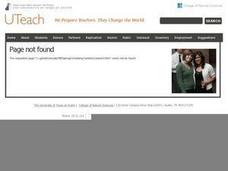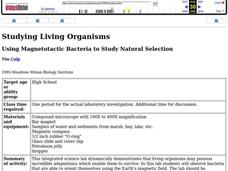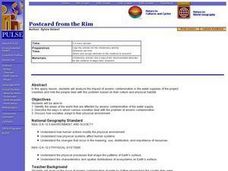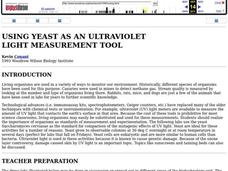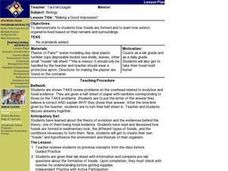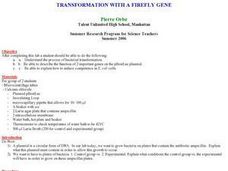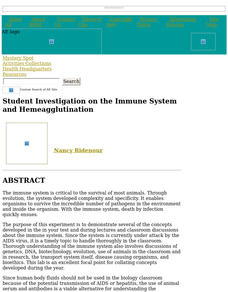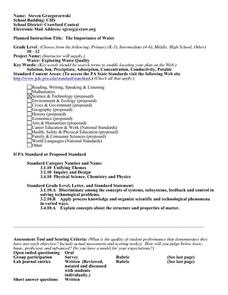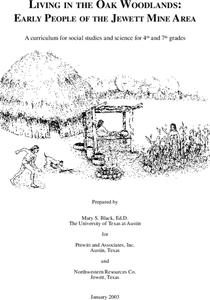Curated OER
Superbugs and Antibiotic Resistance
Students complete experiments on antibiotics and antimicrobials. In groups, they explain how antibiotics affect the evolution of microorganisms. They test various types of bacteria to discover how much resistance they have to antibiotics.
Curated OER
The Birds and the Bees, and the Flowers and the Trees
Students examine the roles in which animals play in the pollination of plants. They recognize that flowers have male and female sexes. Students describe cross pollination and propose reasons for cross pollination through narration of a...
Curated OER
The Everglades
Students research the Everglades. In this Everglades lesson plan, students select an animal or plant to research and work collaboratively in small groups to prepare a presentation.
Curated OER
Is Dilution the Solution to Pollution?
Students explore the different types of pollution. they conduct experiments using dye mixed with tap water to measure the levels of dilution. They discuss at what point the dye (pollution) would be diluted enough to be safe to drink.
Curated OER
Using Magnetotactic Bacteria to Study Natural Selection
Students demonstrate that living organisms may possess incredible adaptations which enable them to survive. They observe bacteria that are able to orient themselves using the Earth's magnetic field and formulate a hypothesis as to how...
Curated OER
World Geography: Postcard from the Rim
Students are able to identify the areas of the world that are affected by arsenic contamination of the water supply. They are able to describe the ways in which various societies deal with the problem of arsenic contamination. ...
Curated OER
Math All Around Us
Students identify real world problems from given story problems. In this story problem lesson, students find places, events or items in the school environment that can be used to create story problems. Students take a picture of the...
Curated OER
Survival of the Fittest
Sixth graders create their own "never before seen" marine creatures and examine how not all creatures in the sea swim, not all have sharp teeth
Curated OER
Plants and Air Purity
Students explore how green plants help improve air quality. They read an article and discuss the importance of air quality and its effects on the human body. They investigate by connecting hose to the top of a Bell jar and to a funnel....
Curated OER
Using Yeast as an Ultraviolet Light Measurement Tool
Students accurately measure the relationship between radiation dose and either survival or some genetic event such as mutation or recombination. They investigate the damage that was done to the DNA molecule as a result of exposure to...
Curated OER
Dishing the Dirt Part 2
Students explore the differences between specific soil characteristics. They participate in an experiment in which they discover soil texture. They write their observations in a journal.
Curated OER
"Making a Good Impression"
Students are shown how fossils are formed and to learn how extinct organisms lived based on their remains and surroundings. They are shown TAKS review problems on the overhead related to evolution and fossil evidence. Students discuss...
Curated OER
Transformation With A Firefly Gene
High schoolers understand the process of bacterial transformation through experimentation. They describe the function of two important genes of the pBestLuc plasmid. They explain how to induce competence in E. coli cells.
Curated OER
Student Investigation on the Immune System and Hemeagglutination
Students study laboratory protocol for hemagglutination experiments.
Curated OER
Germinating Seeds on Gelatin
Students germinate seeds in unflavored gelatin to which liquid house plant food has been added. Students observe and record plant growth in this medium with a variety of variables in a number of experiments.
Curated OER
Mussel Your Way Through Photosynthesis
Students, using zebra mussels (Dreissena polymorpha), elodea and an indicator dye, observe and record the role of light in photosynthesis. They consider plant production of carbon dioxide and the use of live materials in biological...
Curated OER
Pheed the World: Edible Phyla
Students discuss the contributions of different organisms to our world. In this biology lesson, students research countries with limited food supply. They create an improvement plan for a fictitious country assigned to them.
Curated OER
Think Green
Pupils experience and practice compositing and recycling through hands-on-activities. They distinguish between which items from their trash can be recycled, composted and reused. The process for making recycled paper is also covered in...
Curated OER
"Attack A Cell, Any Cell" Disease Unit
Seventh graders use the Internet to gather information about a disease. They also discuss in groups how diseases are a worldwide problem and brainstorm ideas they can help. They create an informational packet on the disease they researched.
Curated OER
The Importance of Water
Young scholars explore the importance of water. They discuss why water is important and students design an experiment that evaluates the water quality and methods of improving water quality. Young scholars perform testing and report...
Curated OER
Making Your Own Sampling Tools
Young scholars begin a class recycling project. They create data sampling equipment using their own designs and test them in the field.
Curated OER
Living in the Oak Woodlands: Early People of the Jewett Mine Area
Students examine the archeology and native peoples of the Jewett Mine area of Texas. Using a map, they explain the economic patterns of the native groups and how the geography of the area affected activities. They compare and contrast...
Curated OER
The Great Spider Debate
Students study about the survival and hunting strategies of several different kinds of spiders. They also be introduced to scientific classification of spiders and write a brief report about one of the spider families they observe.
Curated OER
Rusting: A Form of Oxidation
Learners observe and record the corrosive nature of oxidation-reduction reactions, and determine the electro-chemical series of selected metals.



